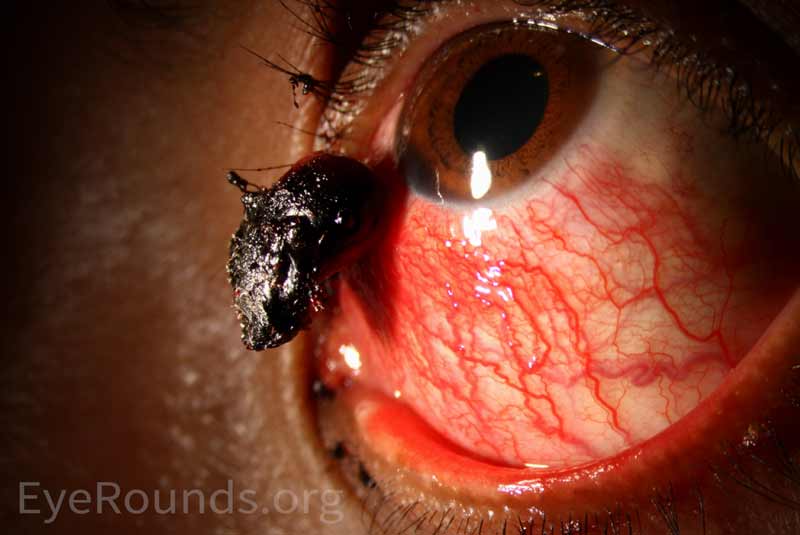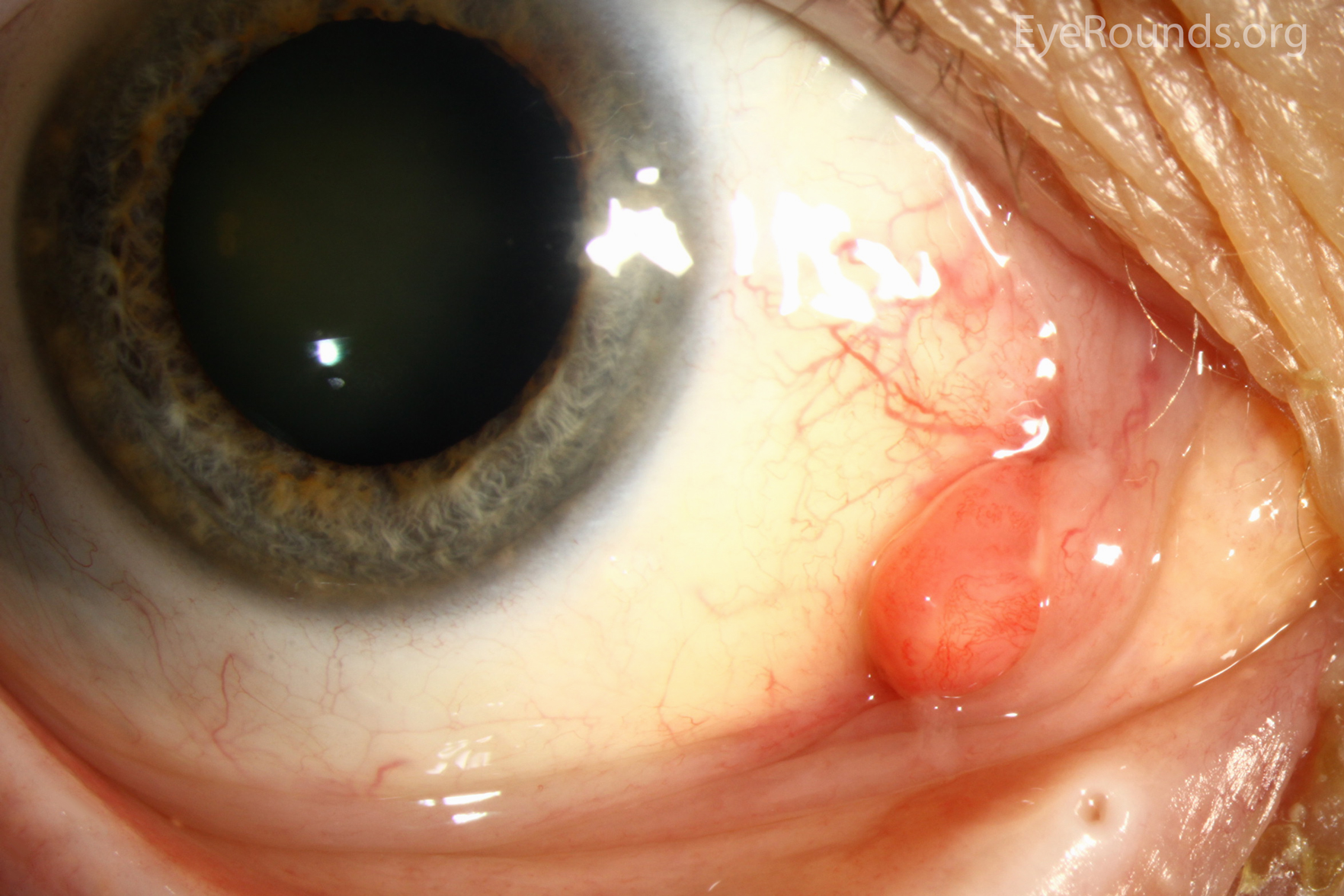
A pyogenic granuloma is characterized as a pedunculated vascular lesion, and appears as a fleshy red or pink mass. It is often located on the eyelid and bleeds easily with minimal contact. Clinically, it arises with rapid growth in an area of previous trauma, surgery, or inflammation. Histologically, it is composed of granulation tissue, capillaries, and non-granulomatous inflammatory cells [1 ,2]. Recommended treatment is excision of the lesion at it's base.

Pyogenic granulomas are formed when there is abnormally vigorous proliferation of granulation tissue. They appear as vascular growths with smooth surfaces, usually at the site of previous ocular surgery.



Ophthalmic Atlas Images by EyeRounds.org, The University of Iowa are licensed under a Creative Commons Attribution-NonCommercial-NoDerivs 3.0 Unported License.